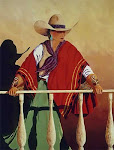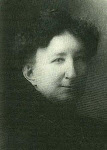
She Wore a Yellow Ribbon(1949). Director: John Ford. Cast: John Wayne. The film was the second of Ford's trilogy of films focusing on the US Cavalry (and the only one in color), the other two films being Fort Apache (1948) and Rio Grande (1950).
Known for its breathtaking views of Monument Valley. Cinematographer, Winton Hoch, won the 1950 Academy Award for Best Color Cinematography. Ford and Hoch based much of the film's imagery on the paintings and sculptures of Frederic Remington.
Ford demonstrated a number of standard Cavalry procedures in horse management in this and other movies. Strict rotation between walk, trot, and leading the horses made them last as long as possible. They were still no match for the lightly burdened Indian horses for endurance, but US Cavalry horses were fed grain (when available), and this helped even the odds a bit.
The film is named after a song common in the U.S. military, "She Wore a Yellow Ribbon".
After the death of General Custer at Little Big Horn, a government stagecoach crossing the southwest desert is attacked and robbed. Capt. Nathan Brittles, who in charge the Seventh Cavalry at Fort Stark, is concerned that the attackers were Cheyenne Indians, because the Cheyenne rarely travel so far south.
Later, while thinking aloud by his wife Mary's grave, Nathan, who is retiring from the Army in six days, knows that his last mission will be to drive the Cheyenne back north.
The next day, Nathan's commander, Major Allshard, orders him to escort his wife Abby and niece, Olivia Dandridge, to Sudros Wells, where they are to catch a stagecoach to take them back East.
After registering a formal complaint with Allshard, Nathan leads the large patrol from the fort. When rival suitors Lt. Clint Cohill and Lt. Ross Pennell, see Olivia with a yellow ribbon in her hair each wonder if she is wearing the ribbon in their honor. Will Nathan complete his mission and safely deliver the two women?
In my opinion the film SHE WORE A YELLOW RIBBON is the kind of film you can watch again and again, and still find it interesting. If you haven't seen it yet, you're in for a treat!
Fun Facts:
When Sgt. Quincannon (Victor McLaglen) is addressing the troops and warning them to "watch them words," he asks who owns a dog, without receiving an answer. He concludes, "Nice dog! Irish setter!" The scene was improvised on the spot by director John Ford. The dog was an unnamed Navajo pet that had fallen asleep during the setup. Multiple takes were required because McLaglen kept blowing the line, calling the dog a "cocker spaniel."
Based on the paintings and illustrations of Frederic Remington, the artist renowned for his nostalgic packaging of the bygone "real" West.
Sergeant Tyree's horse is named "Laddie".
The exterior shots of Capt. Brittle quarters and the building where Major Mac Allshard, Commanding Officer Fort Starke has his HQ are still standing and in Monument Valley itself near to the town of Kanab. The HQ building is now a museum and both are open to the public.
As the regiment's blacksmith, named "Wagner", is seen at work, we can hear the orchestra playing the "Nibelung"-motif from Richard Wagner's famous opera, "Siegfried". In the opera the motif is connected with the forging of Siegfried's sword.
John Ford decided to cast John Wayne as Captain Nathan Brittles after seeing his performance as Thomas Dunson in Red River (1948).
According to Patrick Wayne, this was his father's favorite of the movies he starred in.
John Wayne, who was 41 when the film was made, won great acclaim for his convincing portrayal of the 60-year-old Captain Brittles.
In the graveyard, one of the crosses carries the name "DeVoto", this is likely an homage to Bernard DeVoto, a historian of the American West.
The horse that Ben Johnson rode in this film was a famous movie horse used by many stars in many 40s and 50s movies. It was a big sorrel stallion called "Steel" and was owned by Ben Johnston's father in law "Fat Jones" who ran one of the most successful horse renting stables in Hollywood. The horse, which was known for being very quiet but flashy, was ridden by John Wayne in "Tall in the Saddle" and "The Conqueror", Gregory Peck in "Yellow Skies" and Clark Gable in "The Tall T". The horse made stars look like good riders and Fat Jones always insisted if "Steel" was used in movies, the company hired every other horse used in the movie from his stable, so "Steel" was worth a fortune to him. "Steel" had his own double and the horse that Ben Johnston rides in the galloping scenes was not "Steel" but a spectacular galloper called "Bingo". "Steel" was no movie prima donna however. Ben Johnston also rode him when he won his world champion calf roping title. Ben Johnston also rode both "Steel" and "Bingo" in "Wagonmaster".

Joanne Dru, is best known for her performances in western films such as Howard Hawks's Red River (1948), and John Ford's She Wore a Yellow Ribbon (1949) and Wagon Master (1950). Joanne Dru, was the older sister of entertainer Peter Marshall.

 Kyle Eastwood, is an actor and jazz musician. He studied film at the University of Southern California for two years before going onto a music career. After becoming a session player in the early '90s and leading his own quartet, he released his first solo album, From There to Here, in 1998. His most recent album, Metropolitain, was released 2 June 2009 by Rendezvous. Eastwood plays acoustic and electric as well as double bass. He is the son of filmmaker and actor Clint Eastwood.
Kyle Eastwood, is an actor and jazz musician. He studied film at the University of Southern California for two years before going onto a music career. After becoming a session player in the early '90s and leading his own quartet, he released his first solo album, From There to Here, in 1998. His most recent album, Metropolitain, was released 2 June 2009 by Rendezvous. Eastwood plays acoustic and electric as well as double bass. He is the son of filmmaker and actor Clint Eastwood.



















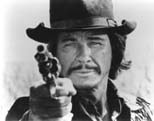
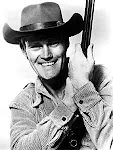


























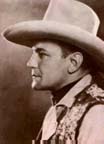





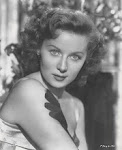








.jpg)















